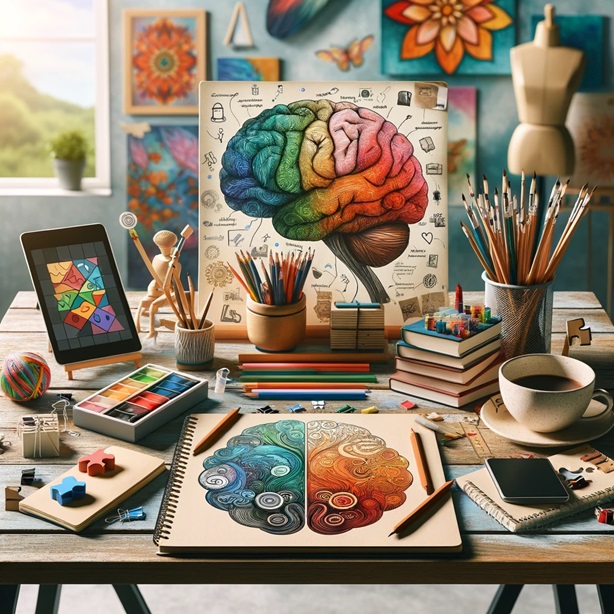Why Creativity Matters
Creativity is not just for artists, writers, or musicians; it's a crucial skill for problem-solving, innovation, and adapting to new challenges in every field. Training your brain to think creatively can lead to more effective strategies, unique solutions, and a more fulfilling personal and professional life. This section explores how creativity is not a mystical talent but a skill that involves specific brain processes that can be developed and refined.
Understanding the Creative Brain
Creativity involves several cognitive processes, neural pathways, and brain regions. The prefrontal cortex, associated with complex thought and decision-making, plays a significant role, along with the default mode network, which is active during daydreaming and imagination. This section will delve into how these brain areas interact during creative activities and how different types of thinking, such as convergent and divergent thinking, contribute to creative outputs.
Brain Training Exercises for Creativity
Enhance your creative thinking with these brain training exercises:
- Brainstorming: Set a timer for 10 minutes and jot down as many ideas as possible related to a topic, without judgment. This exercise boosts divergent thinking.
- Mind Mapping: Visually map out your thoughts on a subject to explore connections and generate new ideas.
- Lateral Thinking Puzzles: Solve problems that require unconventional approaches to stretch your creative muscles.
- Role-Playing: Imagining yourself in different roles can offer new perspectives and insights.
- Learning a New Skill: Taking up a new hobby or skill can stimulate neuroplasticity and inspire creativity.
- Reverse Thinking: Challenge yourself to think in reverse by considering what would happen if common scenarios were flipped.
Creating an Environment That Fosters Creativity
Your environment can significantly impact your ability to think creatively. A space that's quiet, comfortable, and free from distractions can help foster concentration and imaginative thinking. Incorporating elements of nature, art, and varied textures can also stimulate the senses and inspire creative thoughts. Tips for organizing creative spaces in both personal and professional settings will be discussed, including how color and light influence creative thought.
Tips for Maintaining a Creative Mindset
To keep your creativity flowing, consider these tips:
- Routine: Establish a daily routine that includes time for creative activities or thinking.
- Collaboration: Bounce ideas off others to expand your thought process and gain new insights.
- Curiosity: Cultivate curiosity by constantly asking questions and seeking out new experiences and knowledge.
- Reflection: Take time to reflect on your experiences and the ideas you encounter every day.
- Journaling: Maintain a creativity journal where you document your ideas, thoughts, and inspirations.
Conclusion
Creativity is a skill that can be developed and enhanced through practice and dedication. By engaging in targeted brain training exercises, creating an environment conducive to creative thinking, and adopting a creative mindset, you can unlock the full potential of your creative abilities and apply them to all areas of life. This section concludes with a discussion on the importance of nurturing creativity for societal advancement and personal fulfillment.
